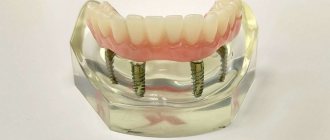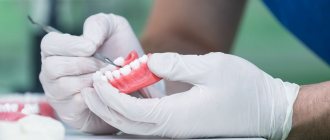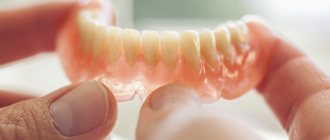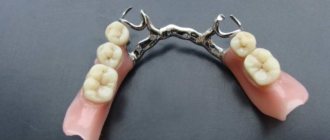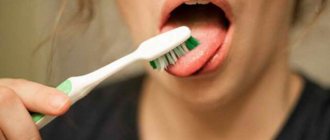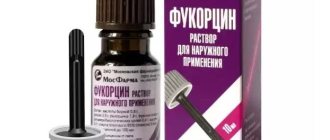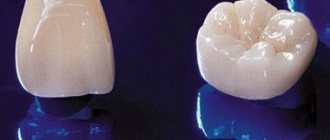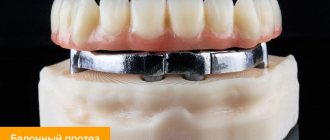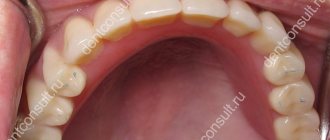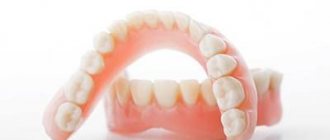Indications and contraindications for installation
Partial dentures involve the use of a special plate on which artificial teeth are placed. It is attached to the remaining healthy units. The advantage of the product is its affordable price and ease of use. There are the following indications for this type of prosthetics:
- loss of one or more teeth;
- inability to get implants;
- aesthetic unattractiveness due to missing teeth;
- rapid abrasion of enamel;
- the need to correct diction;
- absence of maxillary tuberosities.
Partial dentures are not suitable for everyone. The main contraindication is an allergic reaction to the material used for manufacturing. This type of prosthetics should be abandoned in the following clinical situations:
- diseases of the mucous membrane;
- psychical deviations;
- inflammatory processes in the chronic or acute stage.
While wearing partial dentures, certain difficulties may arise. Most often they manifest themselves through impaired diction, the appearance of a gag reflex or inflammation of the gums. Prosthetics for partially missing teeth allows you to preserve the aesthetic appearance and restore the immediate function of chewing molars.
Characteristics of varieties
Depending on the material used, partial removable structures (PRS) can be divided into several types. Each of them has its own advantages and disadvantages. The following products exist:
- acrylic;
- nylon;
- clasp;
- immediate dentures;
- sandwich dentures.
The choice of a specific type of design depends on the severity of the defects and the individual characteristics of the patient. The advantage of ChSP is that there is no need to grind down healthy teeth. The structures are excellent for restoring chewing units in children.
If you need to restore not just one tooth, but a whole row, then bridge prosthetics is used. Removable structures include a small saddle prosthesis. This restoration method is used for the upper and lower jaws. The fastest way to restore an attractive smile is with a cosmetic removable structure.
Types and photos of removable dentures with partial absence of teeth
Depending on the available indications and contraindications, the level of equipment of the dental clinic and the financial capabilities of the patient, prosthetics for partially missing teeth is performed in several ways:
| Type of prosthesis and photo | Short description |
| Partial removable plate | A plastic or acrylic base on which the crowns are installed. Such removable dentures are secured using clasps or clasps. As the plastic wears out, additional layers of material are required. The service life of the product depends on the condition of the jaw bone tissue. |
| Nylon | Acrylic-like nylon construction. Used for prosthetics of one or several teeth. |
| Polypropylene | Construction similar to nylon, but more durable. |
| Immediate prosthesis | A structure for temporary use, shaped like a butterfly. Designed for prosthetic replacement of one or two missing teeth. Contains an acrylic or nylon base with hooks that are fixed to the supporting teeth. |
| Byugelny | A structure that has a metal base to which a plastic base and crowns are attached. To make a cast base, titanium or alloys are used, which may include chromium and cobalt, platinum and gold. Fixed with hooks, clasps or telescopic crowns. Installed if teeth are partially missing. |
| Removable denture without palate | A modern design called “sandwich”. It consists of a rigid acrylic base and elastic polyurethane crowns that are attached to existing chewing teeth. |
Advantages and disadvantages of acrylic, nylon and polypropylene prostheses
Acrylic, polypropylene and nylon prostheses differ in both advantages and disadvantages:
| Name of the prosthesis | pros | Minuses |
| Partial removable plate | Allows you to evenly redistribute the load on the jaw. Fast production, easy installation and easy maintenance. Products made from hard plastic are cheap, while products made from soft plastic are comfortable. Fastening with locks is preferable to fastening with clasps. | Products made from hard plastic are rough, while those made from soft plastic are expensive. May cause speech defects, discomfort and pain when used. The fastening on clasps quickly deforms, which increases the load on existing natural teeth. Their chewing surface deteriorates, causing toothaches and headaches. Due to microporosity, it is impossible to fully clean the prosthesis from plaque. Short service life - 4–5 years. |
| Nylon | Hypoallergenic, more flexible, less likely to cause discomfort. Fast adaptation. The hooks have a shade similar to the color of the gums, so they are hardly noticeable. | The flexibility of the product may accelerate bone atrophy. As a result, the strength of the structure's fixation will decrease. Unevenly distributes the chewing load. There is no relocation. |
| Polypropylene | More durable and reliable than nylon. Correction is required less often. | Difficulty in relocation. It is installed only if the dental units are partially missing (no more than 3). |
| Immediate prosthesis | Nylon structures are unnoticeable. | Not intended for permanent use. |
Which prosthesis is better – clasp or “sandwich”
Clasp dentures and “sandwiches” are widely advertised, but each of them has both advantages and disadvantages.
| Name of the prosthesis | pros | Minuses |
| Byugelny | Evenly distributes the load on the jaw. More comfortable than a plate prosthesis. When fixed with clasps or telescopic crowns, it is hardly noticeable. Able to eliminate mobility of existing teeth. Durability and reliability. | Expensive, more complex to manufacture. Installation may require grinding of natural teeth. |
| "sandwich" | It is not so massive, does not interfere with the perception of taste and pronunciation of sounds, and does not provoke vomiting. | Polyurethane crowns are very thick. Low strength and stability. May cause discomfort. |
Despite the fact that designs without a sky are considered the most modern, they have very important disadvantages that appear during use. The most significant disadvantage of partial dentures is their high price, but in many situations they are the best choice for partial dentures.
Acrylic designs
The basis of the prosthesis is a plate that shifts the chewing load to the palate and gums. For the manufacture of such structures, rigid acrylic plastic is used. The product is attached using special metal hooks.
Acrylic partial dentures for the lower jaw have the following advantages:
- ease of manufacture;
- the ability to carry out repairs in case of breakdown;
- low cost.
Such dentures are quite massive, so they take up a lot of space in the mouth. In some cases, there is a temporary disturbance of articulation and taste sensitivity. The service life of plastic is from 3 to 3.5 years. With rapid atrophy, it is reduced to 2.5 years, and with slow atrophy of bone tissue, it increases to 5 years.
Features of fixed devices
Fixed options are suitable for replacing one or more elements. They differ in design features, materials and installation methods. This category includes:
- Crowns;
- Bridge type prostheses;
- Implants.
This also includes plates that are fixed on the front surface of the teeth - lumineers and veneers. These devices do not replace bone processes, but only improve their appearance.
Dental crowns
A dental crown is a type of cap that is placed over the remains of a tooth in order to restore it. Such caps allow you to restore the natural color and shape of the bone process, protect it from the development of caries and other destruction. Crowns are:
- Metal - from special alloys. They are low cost, but noticeable in the mouth and are not suitable for patients with metal allergies;
- Metal-ceramic - considered the most durable and durable, but require significant grinding;
- Ceramic (porcelain) - not too allergenic, not conspicuous, but not durable.
Indications for crown installation are serious damage to hard tissue. If a large area of the coronal area is destroyed, it is no longer possible to save the situation with a filling. This type of prosthetics is used for aesthetic purposes to hide visible defects. A prerequisite for installing a crown is a preserved tooth root.
Bridge type devices
A bridge is an orthopedic model that includes a pair of crowns and several artificial elements standing between them. This option is relevant in situations where 1-4 teeth are destroyed. Prostheses can be one-piece or composite; a suitable device is selected individually.
The extreme crowns are attached to healthy elements that perform a supporting function. The devices have considerable strength and cope well with chewing loads, but installation requires grinding of the nearest teeth. The service life of such a bridge is about 5 years, and it takes a long time to manufacture. The cost depends on the material of the crowns.
There are several types of bridge-like devices:
- Metal - a budget option for use on indigenous processes;
- Ceramic - a more aesthetic solution;
- Combined - combining metal with plastic or ceramics;
- Adhesive – made of composites secured with special glue.
Prosthetic systems can be secured with attachment locks.
Prosthetics on implants
The procedure for prosthetics on implants involves replacing missing teeth with artificial elements. The implant itself consists of three parts: a body implanted into the gum, an abutment connecting the body to the artificial component, and the crown itself. This is a fairly effective option, but only in the absence of one or 2-4 elements in a row.
Read Prosthetics of primary teeth in children: types of children's dentures, indications for prosthetics
A metal pin is screwed into the bone tissue. A crown is fixed on it, performing a chewing function. No support is required here, so it is possible to avoid grinding. Implants do not load the bone and do not contribute to its destruction, but they require a long rehabilitation period and the presence of contraindications.
Nylon dentures
The main difference between nylon structures and acrylic ones is elasticity. They are as comfortable as possible to wear, but do not stick well in the mouth.
Flexible nylon
The advantages of such prostheses include the following:
- fast adaptation;
- small weight and size;
- color close to the natural color of the gums;
- the material does not cause an allergic reaction.
Due to its elasticity, such material does not distribute the chewing load well. Therefore, the bone under the product may atrophy. When chewing, air can penetrate into the nylon base of the structure.
Clasp models
This design is a bridge that imitates natural gums both in color and configuration. Artificial teeth are installed directly on the base. The base is high quality metal. If the patient is allergic to metal, then polymer materials are used instead.
Clasp denture option
Partially removable clasp dentures are manufactured using lithium. In this case, all individual patient parameters must be observed. Thanks to the hook-shaped locks, the structure is securely fixed and held during chewing. The advantages of such prostheses are as follows:
- no need to prepare adjacent teeth;
- aesthetic appearance;
- uniform distribution of chewing load;
- compact dimensions;
- long service life.
The disadvantage is the relatively high price, as well as the risk of food residues accumulating in the locks. The alveolar process may undergo an atrophic process. In terms of their functional characteristics, clasp dentures are better than plate and nylon dentures.
Pros and cons of removable and fixed prosthetics
Partial dental prosthetics are performed using removable or fixed devices. The first person can remove or put on on their own without resorting to medical assistance. The latter are crowns or implants fixed with a special cementing material. Each type has its own advantages, disadvantages and features of use.
The advantages of removable options are:
- Large selection of sizes and shapes;
- The ability to restore any number of elements in a row, starting from one;
- Possibility of taking into account indications for prosthetics and the clinical situation;
- Comfortable to wear;
- Easy to care for;
- Short production times;
- High compatibility of the material with body tissues;
- Availability of metal-free structures for patients with metal allergies;
- Minor period of adaptation;
- Low price.
Removable prosthetics are used in cases where fixed prosthetics are not possible for objective reasons. The devices are manufactured with high precision and, if necessary, can be used as a temporary measure.
The disadvantages of this option include fairly frequent breakdowns. In addition, such a device may fall out. To prevent the growth of bacteria, dentures must be cleaned regularly, and with prolonged wear, bone tissue atrophy is possible. Due to wear and tear over time, replacement becomes necessary. For longer use of such prostheses, their base is reinforced with a metal mesh, which makes them more durable.
The main advantage of fixed dentures is their long service life. But this factor largely depends on the patient’s lifestyle, including the presence of bad habits. Other advantages are:
- Cleaning procedure similar to traditional oral care;
- Quick implantation into tissue;
- Resistance to daily chewing loads;
- Complete restoration of the natural functions of the dentition;
- Maximum comfort;
- Feeling of your own teeth;
- Preservation of bone tissue density;
- Reliable fixation in the mouth.
Fixed prosthetic devices are installed in the presence of diseases that contribute to the destruction of tooth roots, for example, periodontitis. The devices ensure proper distribution of the chewing load, ensure normal functioning of muscles and joints, and completely restore the aesthetics of the smile. This technique does not require turning adjacent elements.
Read repair of removable and conditionally removable dentures: repair of acrylic dentures, repair of clasp dentures
Among the disadvantages of fixed prosthetics, one can note the rather high cost due to expensive materials and equipment. This requires a more complex procedure, so you will have to visit the doctor more than once.
Contraindications can also be considered as disadvantages: diabetes, heart and vascular diseases, uncontrolled hypertension. There are anatomical restrictions. Thus, fixed dentures are not placed at a certain height of the alveolar bone, which is often found in elderly people. It takes up to six months for the pins to heal.
Immediate prosthesis “Butterfly”
This design consists of a base, artificial gums, teeth and retainers, which are located on the sides. Because of its appearance, such a prosthesis is called a butterfly. Most often it is used to restore chewing units. The prosthesis is made in accordance with the impression of the patient's jaw. A model of the new tooth and gum is created using computer modeling.
The installation process is quite fast. If the design does not provide hooks, then fastening occurs using suction cups directly to the gum.
Butterfly prosthesis for 1 tooth
The advantages of a butterfly prosthesis are:
- the ability to use it for all age groups;
- no need to damage the enamel of neighboring teeth;
- ease of care;
- quick installation.
Immediate denture for 2 teeth
The product is quite fragile and therefore requires careful care. The period of getting used to the prosthesis is long and is accompanied by mild discomfort.
Principles of partial removable prosthetics
If the masticatory processes are destroyed, but there are intact bone elements next to them, partial removable prosthetics are used. Such systems look like plates with artificial teeth fixed on them.
Partially removable dentures are:
- Clasp;
- Lamellar;
- Nylon;
- Immediate type;
- No palate.
Removable dentures are most often used in the absence of the entire dentition, but partial dentures are also possible. You should choose the appropriate option very carefully, since if several elements are lost, not all devices will be aesthetically pleasing and comfortable.
Partial dental prosthetics are performed using removable or fixed devices. The first person can remove or put on on their own without resorting to medical assistance. The latter are crowns or implants fixed with a special cementing material
Clasp dentures
Clasp dental prosthetics is performed using a device with a base in the form of a metal arc on which artificial gums are located along with chewing elements. Such systems last more than six years. They have a number of advantages such as:
- Maximum accurate imitation;
- Uniform distribution of chewing load;
- Quick addiction;
- No discomfort;
- Reliable fastening;
- Possibility of restoring teeth in any area.
Such prostheses are easy to care for, but require the installation of crowns and cannot be used in cases of acute systemic diseases or the absence of supporting elements.
Clasp devices are made of plastic or composites. There are several options for the fixation method:
- Using clasps - budget structures secured with metal hooks;
- On attachments - special micro-locks, invisible from the outside. One part of such a lock is located in the microprosthesis, the second in the supporting element under the crown;
- With telescopic type crowns - they consist of a removable part in the form of an artificial component with an internal cavity and a supporting base coated with metal.
Splinting clasp devices fit tightly to moving teeth, redistribute the load between the gums, diseased and supporting elements, preventing loosening and the development of diseases.
Plate structures
The cost of partial dentures with plate products is the most affordable of all options. The system is installed in the absence of teeth in a row or one at a time, and is used for temporary restoration during the period of implantation. On average, such options last 3-4 years.
Acrylic plate prostheses are easy to use, unnoticeable and repairable. If necessary, you can change the shape. But in the process of addiction, discomfort, disturbances in diction and taste, severe salivation, and an allergy to metal may occur.
Nylon crowns
Nylon crowns are elastic and flexible. Such characteristics allow you to perfectly follow the contour of the gums. The products can be used for five years. The main advantages are:
- Use of hypoallergenic material;
- No risk of gum chafing;
- Quick adaptation to the prosthesis;
- Antibacterial qualities;
- Resistant to moisture absorption.
Read Modern dentures for the upper jaw - telescopic, acrylic, quadrotti and other types
However, the flexibility of the design sometimes causes the load to shift to the side that is more often used when chewing food. Under the artificial device, the gums may atrophy. The cost of such systems is quite high.
Butterfly dentures and Sandwich
Immediate prostheses are also called butterfly systems. With their help, you can replace no more than 1-2 teeth. The devices are made of acrylic plastic or nylon with hooks that are attached to the supporting processes.
Devices without a palate (Sandwich) belong to a new generation. A rigid base made of acrylic plastic is combined in such products with elastic polyurethane crowns, which are placed on the supporting elements. Artificial components are installed in the base.
Sandwich dentures
The design of sandwich dentures is practically no different from conventional partial dentures. The only exception is the absence of the palatal part. Fixation is carried out using locks. A product of this type can be called conditionally removable. It has an additional fastening in the form of a suction part.
For production, plastic, acrylic and metal clamps are used. The product is modeled entirely based on a cast of the patient’s jaw. The structure is installed on previously prepared abutment teeth. It has the following advantages:
- aesthetic appearance;
- durability;
- no discomfort during operation;
- reliable fixation;
- no risk of developing bone atrophy.
The disadvantages are the high cost and the risk of developing an allergic reaction, since the product contains metal parts. An important factor is the presence of healthy teeth that can be used for support.
Features of care
In addition to regular hygiene procedures, it is recommended to use mouth rinse and dental floss. Removable structures require the same care as regular teeth. To clean them, it is recommended to use high-quality paste and a brush. Particular attention should be paid to acrylic dentures. This material is quite porous, so plaque accumulates on it more actively.
You need to have your teeth professionally cleaned periodically. If you need to remove the denture at night, you don’t have to put it in a glass of water. It is enough to wrap the product in a napkin. If you feel the fasteners loosening while putting on or taking off the product, you should immediately consult a doctor so that he can correct the fasteners.
The service life of some prostheses is 5 years. With increased atrophy of bone tissue, the service life is reduced several times. In order for the product to last as long as possible, you should follow all recommendations for caring for it. If damaged, some types can be repaired. For example, acrylic and clasp structures can be repaired. Partial dentures are widely used in modern dentistry, as it allows you to preserve not only the attractive appearance, but also the functionality of the teeth.
